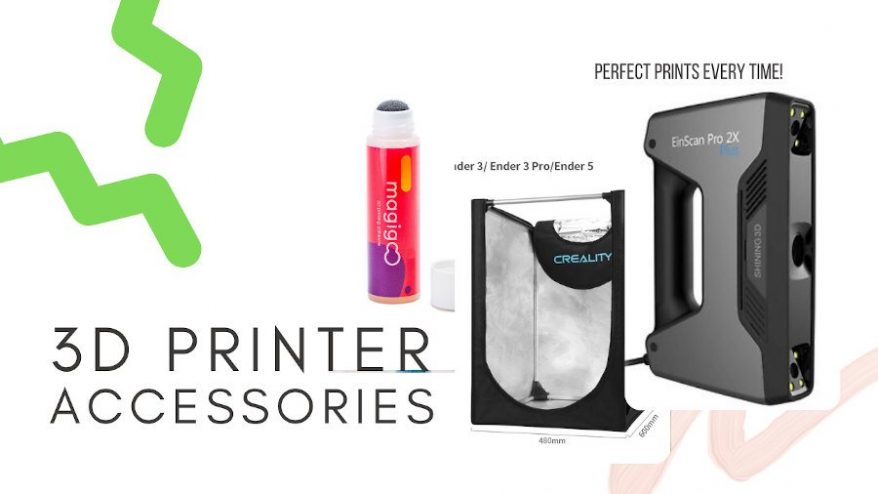
So you’ve bought a 3D printer. It’s shiny and brand new, and you’ve just started printing your first models. It comes with a bit of PLA to get you started, but you’re already feeling more ambitious and googling 3D printer accessories to expand your horizons.
ABS? Maybe I’ll try printing flexible filaments like TPU, or Nylon? And how do I make my parts come out looking better? We hear you ask.
Well, there’s a number of ways to augment your printing.
If you just want to print PLA and create basic prints, you absolutely can without many of these fancy extras. However, for anyone who wants to upgrade their 3D printing experience, create better quality models with crisper surface finishes, or print with tougher materials, these 3D printer accessories will get you there.
3D printer accessories for the best quality prints
3D printer filament storage accessories
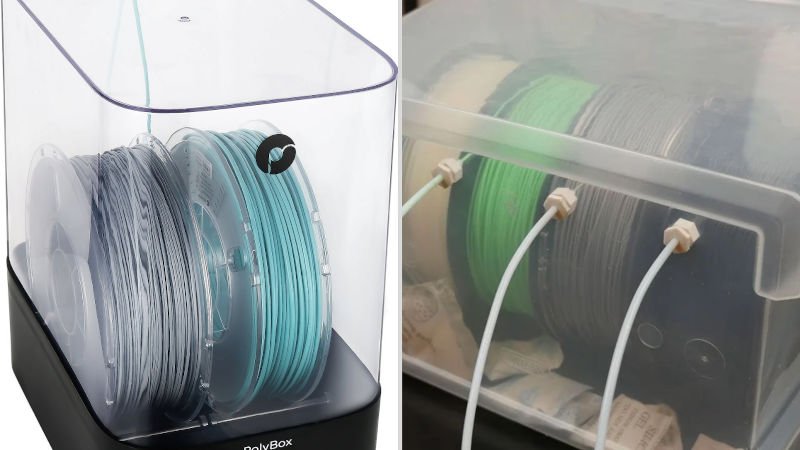
Pros
Keeps your filament dry.
Filaments can look bubbly and grainy without storage containers.
Cons
Can be pretty expensive.
Almost all filaments are hygroscopic to various degrees. This means they absorb moisture from the air — making for less than ideal printing conditions.
Moisture deteriorates filament quality, making it bubbly and with a rougher texture. When perfect quality is crucial, such as in precise rapid prototyping or printing intricate miniatures, this can render your filament useless.
Therefore, it’s absolutely essential to keep your filament protected from open air, such as in filament storage. Though filaments like Nylon and Polycarbonate are known for being the most hygroscopic, even PLA deteriorates if left out long enough.
Filament storage containers keep your filament dry until you need to use it. Some even have holes for extruding filament while remaining protected from water vapor in the container. Without this protection from the elements, your prints will look bubbly and grainy.
We recommend the following filament storage:
3D printer accessories for drying filament
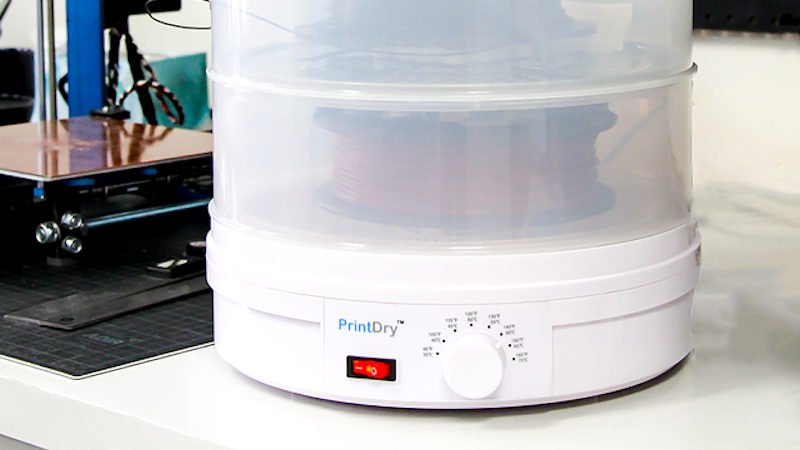
Pros
Dries the filament to bring back its best 3D printing characteristics.
Returns wet filaments to their original state so you can print at the highest quality.
Cons
Not necessary if you learn how to use other and more standard heaters.
As careful as we all try to be, sometimes filament gets exposed to the air for too long and gets “wet”. Fortunately, you can dry filament to bring back its best 3D printing characteristics with a filament dryer.
Filament dryers heat away the moisture that accumulates in filaments, returning them to their original state so you can print the highest quality possible models. They’re specially designed for filaments, though can you can use other heaters if you learn the right amount of time and temperature for your filament.
We recommend the following filament dryers:
Enclosures

Pros
Prevents external factors from affecting your prints.
Mediates temperatures and prevents cracking or excess warping.
Cons
Not necessary for PLA 3D printing.
For standard PLA 3D printing you’ll be fine, but for tougher filaments like ABS, Nylon and Polycarbonate, a heated enclosure is crucial for temperature control during and after printing, and preventing external factors affecting your part.
Some 3D printers, like the Ultimaker S3 or Dremel 3D45, come with built-in enclosures. But for most 3D printer kits, such as the Creality Ender 3 or the Anycubic Mega-S, their open build areas make printing filaments like ABS more difficult.
When printing these filaments that require such high temperatures, layers can cool too rapidly, leading to cracks and splits in your part’s mid-section. An enclosure remedies this problem, mediating the temperature and preventing cracking or excess warping from sudden temperature changes.
We recommend the following enclosures:
- Enclosures for Ultimaker, Creality, Prusa, Pulse and more 3D printers here on Matterhackers
- Enclosures for Creality and other printers available on Amazon here
See also: the best enclosed 3D printers.
Build surfaces
Pros
Crucial for good adhesion.
Prevents parts from sticking and leaving marks on the print bed.
Cons
No major drawbacks to having one.
Some 3D printers ship with glass print beds that make PLA printing easier, but in general, if you don’t use a bed surface, you’ll find your parts stick and leave marks on the print bed. They may even remove chunks from some beds if they’ve bonded with the print bed material while cooling.
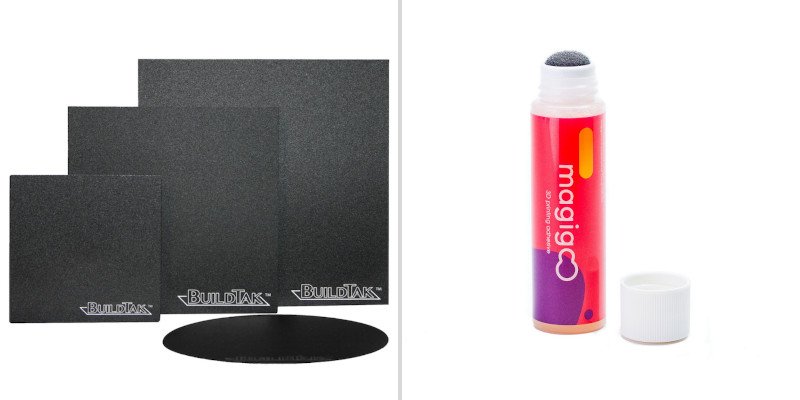
Beyond this, bed surfaces are crucial for good adhesion, creating strong and durable parts that don’t fail.
But different build surfaces suit different filaments best. These are the build surfaces we recommend for each filament:
PLA — works well with Kapton tape or blue painter’s tape, standard glue or hairspray, specialized adhesives like Magigoo, PEI sheets such as Buildtak.
ABS — Kapton tape, ABS slurry / juice, Magigoo, Buildtak.
PETG — Magigoo, PEI sheets such as Buildtak, blue painter’s tape.
Nylon — LayerLock Garolite, PEI sheets.
TPU / flexibles — PEI sheets, blue builder’s tape with glue stick.
We recommend the following here
Read more: the best build plate surfaces
3D printer removal and finishing tools
Print removal tools
Pros
Effectively removes plastics from the print bed.
Cons
Cheaper models can damage the sides or bottoms of the prints when removing them.
With the high heats used during printing, naturally the plastics used will stick to your print bed when cooling down.
Most 3D printers now come with a basic spatula-type tool, but especially on cheaper 3D printers they are not as effective as specialized 3D printer accessories for removing prints.
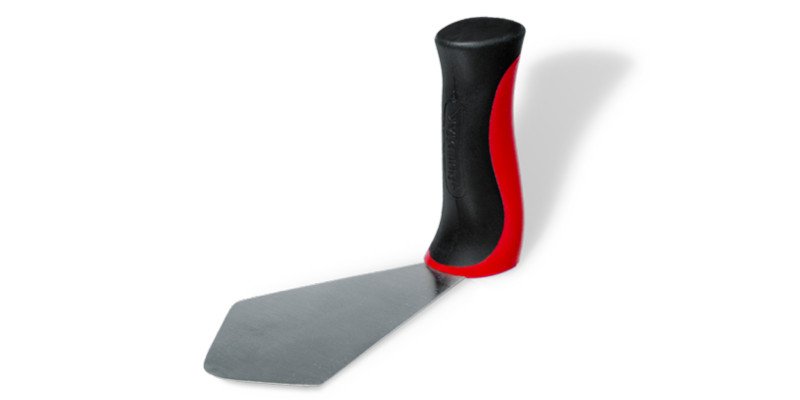
Less effective tools may damage sides or bottom of the print when removing it.
Investing in a premium 3D print removal tool can therefore pay dividends, cleanly removing parts with minimal damage.
We recommend the following 3D printer removal tools:
Support removal tools
Pros
Removes those supports with the least damage or visible remnants possible.
Precise and powerful enough to cut cleanly to avoid damage to the model.
Cons
You might already have a suitable tool at home, so may not be necessary to buy it.
Any parts with overhangs or steep geometries wider than 45 degrees will succumb to the forces of gravity if left unaided. Luckily for you however, your 3D slicer software can generate supports for you that will keep your model in proportion while it prints.
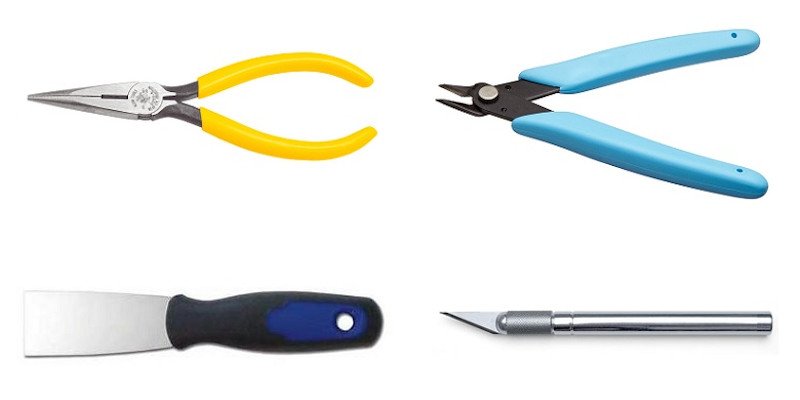
Once finished however, those supports are a no longer useful, just a nuisance. So if you’re printing geometrically complex prints with on an FDM or resin 3D printer, you’ll need an effective 3D printer support removal tool to remove those supports with the least damage or visible remnants possible.
The best 3D printer accessories for removing supports are precise, powerful enough to cut cleanly to avoid damage to the model, and light enough to be handled with ease. Pliers and clippers do this job well, but just in case a support flies off and hits your eye, make sure you wear eye protection.
We recommend the following:
- Matterhackers tool kits with full suite of tools for print removal
- Other support removal tools available here
3D print finishing accessories
Now you’ve removed the supports, you’ve got an almost-perfect part ready to go. Unfortunately, there’s still some tiny imperfections from removing the supports.
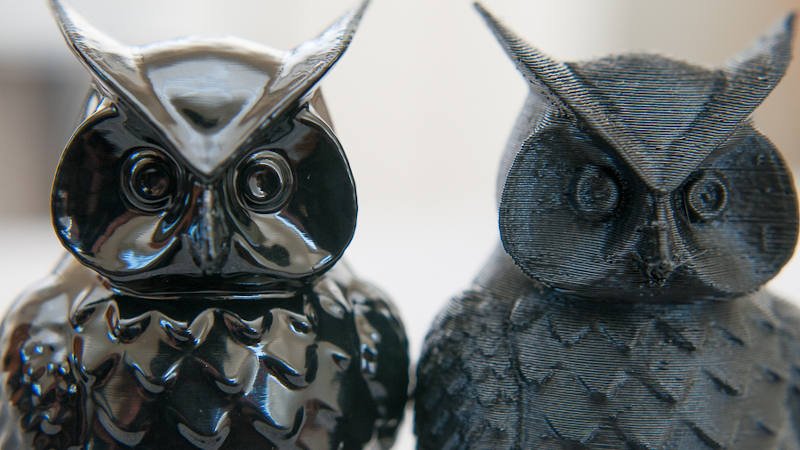
Pros
Comes out shiny and glossy.
Cleans up and smoothes out the print.
Cons
Can be dangerous to smooth ABS or ASA.
No worries — this can be easily remedied. One way of post-processing parts is sanding them down so they’re smooth and cleaned up. Different sandpapers create different finishes.
For ABS, a simple way of smoothing is by using acetone. Do your research before attempting to smooth ABS or ASA however, as it can be dangerous. Do it correctly however and your ABS parts will come out looking shiny and glossy.
For PLA it’s more difficult, but if you carefully sand your model and then heat or spray it, you can create shiny PLA parts. You can also add polish.
We recommend the following:
- Acetone is available here
- Assorted sandpaper with different grits for sanding down prints available here
Paints for finishing prints
Pros
Gives the prints a beautiful color.
Can be very fun and enjoyable.
Cons
Your prints will need multiple coats.
Painting your models is the funnest part for any hobbyist looking to 3D print miniatures, 3D character designs or for professionals creating color prototypes.
But it’s not as simple as just picking up your paints and getting started — at least not if you want beautifully-colored models with even coats and smooth edges.
Before even painting, make sure you’ve sanded down your model so it’s as smooth as you can make it without large layer lines that would make for uneven painting.
You’ll also need a primer for filling in any remaining small gaps, likely multiple coats.
The easiest way overall to paint your 3D prints is by spray painting with your part suspended in the air on a small string, but failing that you can spray each face with your model sitting on a surface. If you’re only coloring one side, just having it facing towards you can work fine.
For 3D printed miniatures like D&D or 28mm miniature-style models or prototypes that require precision you can only get from hand painting, use acrylic paints. These should work fine on any PLA, PETG or ABS print. Coat several times with very thin coats and be very careful to avoid blobs of paint in any areas.
If you’re 3D printing Nylon, its hygroscopy means it’s best to dye it. Matterhackers personally recommend and have shown Rit DyeMore to work well with Nylon, and print with light-colored (preferably white) nylon filament to get the best results.
See also: our buyer’s guide for the best 3D printers for miniatures.
Gluing prints
Pros
Can glue parts together with ease.
Acetone works can be used to polish and glue together ABS, ASA, and HIPS.
Cons
Can’t use superglue for TPU or elastic filaments.
Thankfully this one’s pretty simple. Standard superglue works well for attaching PLA, ABS and PETG parts together with ease.
However, you can’t use it with TPU or other elastic filaments. For flexible filaments, your only real choice is to use a 3D pen as a hybrid solderer to stick prints together.
Not only can ABS, ASA, and HIPS be polished using acetone, but they can also be glued together with it.
See also: our ranking of the best 3D pens
Other useful 3D printer accessories
3D scanner — useful 3D printer accessory for scanning models
Pros
Good for replicating objects.
Some smartphones can be used as scanners.
Cons
Cheap scanners lack accuracy.
For those who like taking advantage of the free 3D printer files available online via Thingiverse or the other range of sites online, this may not appeal to you.
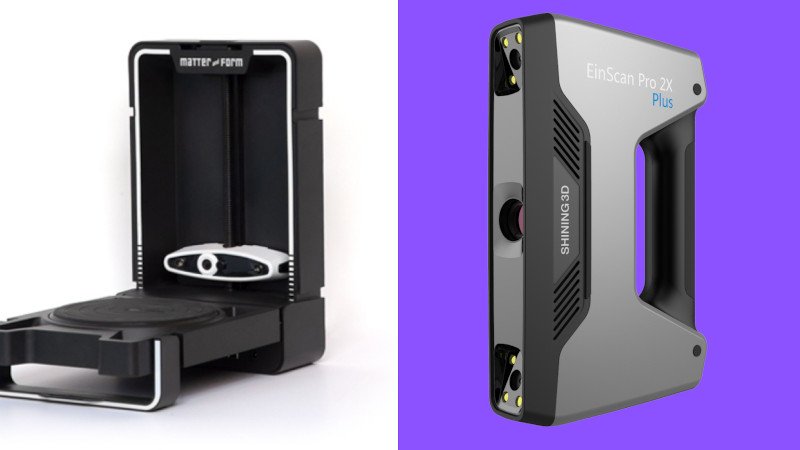
But for makers looking to scan and replicate objects, or scan their faces, bodies, rooms, cars, pets, and various other things, 3D scanners offer fantastic precision even at good prices.
There are different 3D scanner types for different uses. Handheld 3D scanners are great for larger objects like for scanning people, whereas stationery 3D scanners scan still objects with fantastic detail. For owners of smartphones such as the latest iPhones and Android phones with 3D depth sensors, you can even create (very basic) scans using 3D scanning apps.
Lower priced handheld scanners struggle with accuracy, but cheaper stationery 3D scanners can scan still objects with great detail.
You can also use a standard camera, or webcam, to record your 3D prints. We also have a guide to the best webcams for 3D printing time-lapses.
We recommend the following:
- Matter & Form 3D scanner: Available on Amazon here / Available on Matterhackers here
- Sol 3D scanner: Available on Amazon here
- Premium but best quality options: Shining 3D Einscan range — Available on Amazon here / Dynamism here
See also: our buyer’s guide for 3D scanners in every price range
Digital caliper — useful 3D printer accessory for measuring precise parts
Pros
Will make your life much easier.
Good for measuring precise prints.
Cons
No major drawbacks.
If you’re just planning on 3D printing cool things you’ve downloaded from Thingiverse for fun, you don’t need to worry about having a caliper.
But for precise prints, especially when multiple pieces need to fit together, or for measuring steps across each axis, having good quality calipers to hand will make your life much easier.
We recommend the following:
Nozzle cleaning kit
Pros
Good for keeping your nozzle clean and functioning well.
Cons
You could get away with cleaning your nozzle without getting a cleaning kit.
Even with easier to print materials like PLA your nozzle can clog and jam, and you’ll need to work on it to be able to use it again.
There are a variety of different kits and specialist tools which can help with this.
We recommend the following:
Spares: 3D printer accessories for when parts wear out
Pros
Good to have backups just in case something breaks down.
Cons
Not necessary (Although it can be very useful to have spares).
Unfortunately, things in life are not infinitely durable — and with sustained use, parts start breaking.
Nozzles especially can wear out quickly, particularly if using standard brass nozzles rather than tougher hardened steel or ruby-tipped nozzles.
You may also want to upgrade to a more powerful extruder / hot end , such as one by E3D, or switch out your print bed.
- Spare nozzles available: Matterhackers here / Amazon here
- Extruders available: Matterhackers here / Amazon here
- Hot ends available: Matterhackers here / Amazon here
See also: our buyer’s guide for 3D printer extruders




